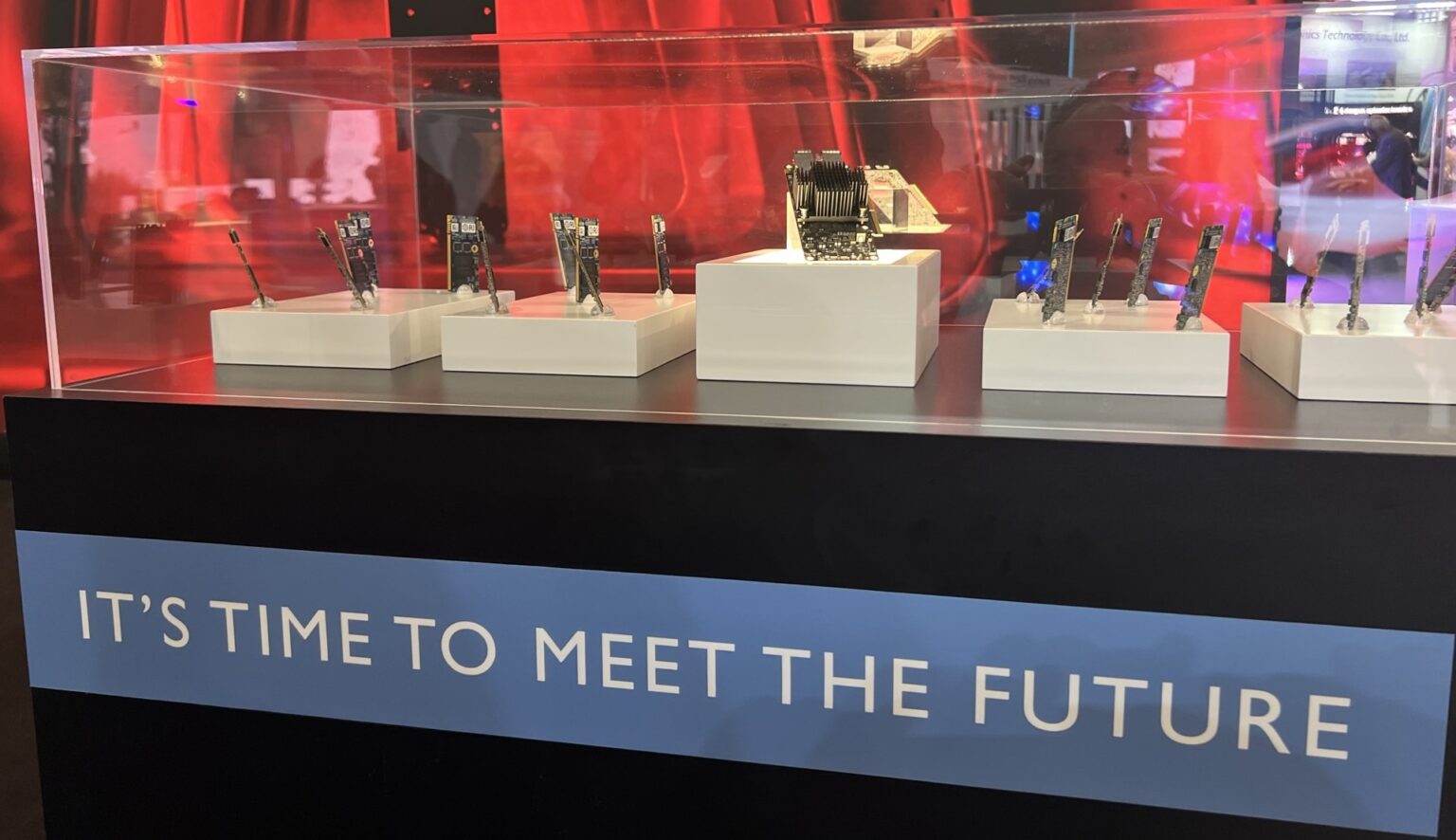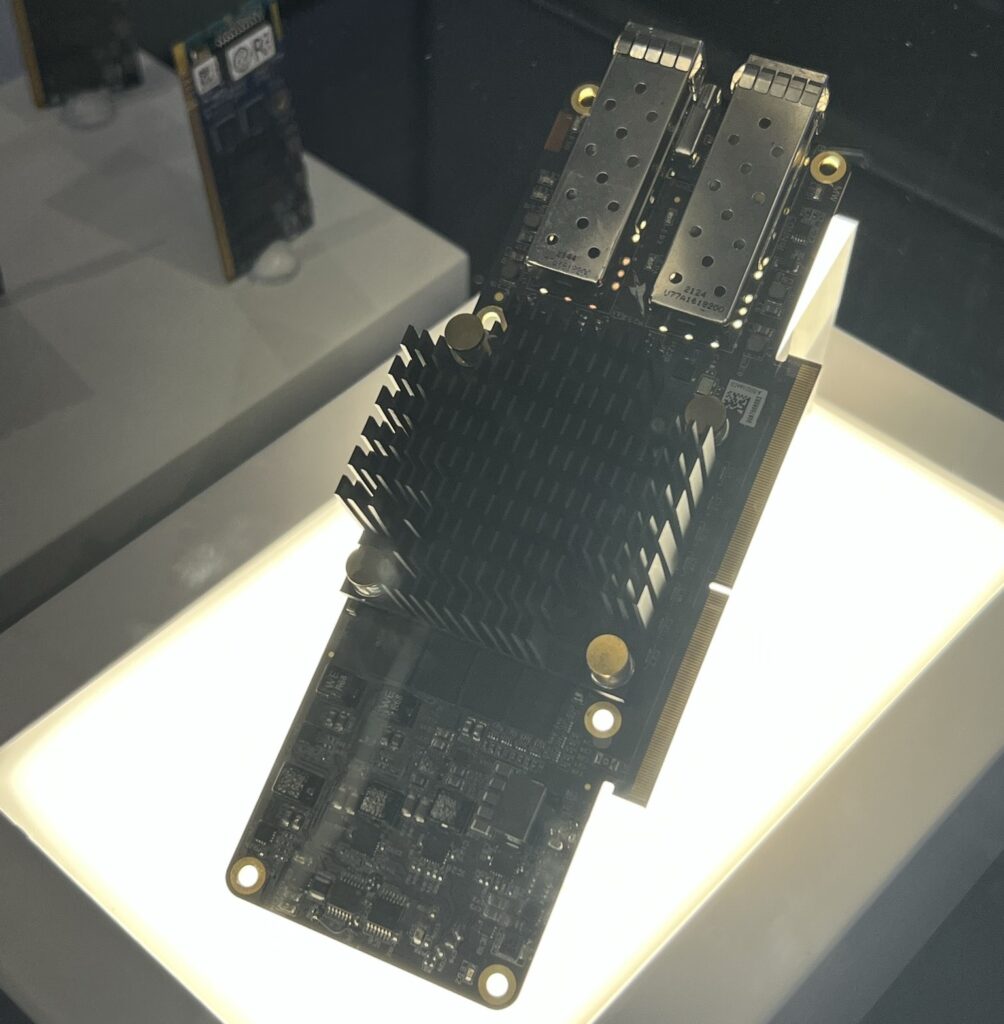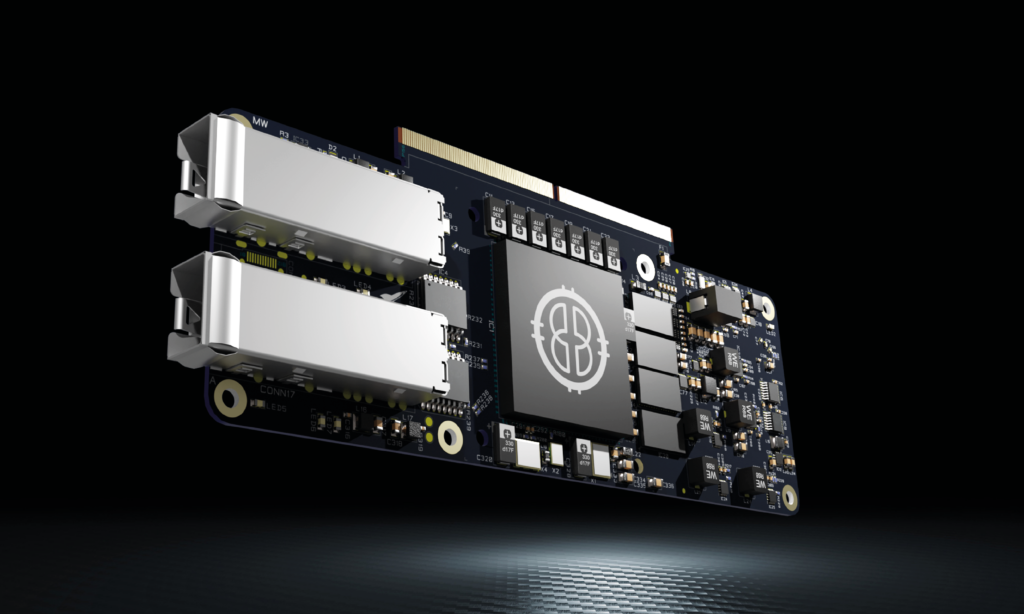News
8 Feb 2023
ISE Standout – Brompton Technology’s Tessera G1

Subscribe to CX E-News
Brompton Technology unveils world’s first receiver card capable of delivering 1 million pixels, RGBW and 1,000 fps for next-gen LED panels. And you’ve gotta love the fact the ‘W’ in RGBW stands for ‘Whatever’
One of the standout bits of new tech at ISE last week in Barcelona isn’t even in a product yet. We had the pleasure of being introduced to the new Tessera G1 LED receiver card by Brompton’s Product Lead, Cesar Caceres. The term ‘game changer’ gets thrown around a lot, but the capabilities of this card are going to completely revolutionise LED panel performance.
Almost every single LED manufacturer at ISE (and pretty much all of them were there) had a working virtual production studio set-up on their stand; even LG were getting in on the act. And every other LED manufacturer had some version of a MicroLED screen, with pitches getting as low as .6mm. They are of course still incredibly expensive, but pricing will come down as more products come to market. The missing piece of the puzzle in all of this is the receiver cards and processing, and Brompton is taking care of that.
The G1 is the first receiver card to support 10Gb fibre connections direct to the panel. It is also capable of supporting a staggering one million pixel capacity for a new generation of ultra-fine pixel pitch panels, or up to 1,000 fps (frames per second). All this is made possible by a monumental 20x increase in computing power compared to the existing top performer, the Tessera R2+ receiver card, making the G1 a game-changer for the industry.

This latest innovation is a major advance in the company’s mission to push the boundaries of what is possible with LED video processing technology. With the G1 receiver card, users can expect a whole new level of exceptionally realistic visual performance, making it a must-have for content creators in the future.
Cesar emphasises that the company’s Tessera R2+ receiver card is still optimally positioned to deliver exceptional performance for a vast majority of LED fixtures. In fact, thousands of projects worldwide will continue to use LED panels integrated with R2+ cards with great success. The G1 is the choice for next-generation panels.
“We are definitely not forsaking the R2+ card and all its impressive capabilities,” Caceres explains. “We are simply recognising the rapid advancements of LED video technology. As a company, we are proactively positioning ourselves to meet and exceed the future demands of our industry.”
Already in talks with panel manufacturers, Brompton is working to integrate the new receiver card as the driving force behind the next-generation of LED screens. Cesar notes that the benefits are not only about the substantial increase in pixels that can be processed thanks to the new card, but that it will also facilitate the integration of additional calibrated channels, which Brompton defines as RGBW, Red, Green Blue and ‘Whatever’.

“As with all our systems, we offer flexibility by keeping the possibilities open for the extra emitters. One of the most useful colours we anticipate panel manufacturers wanting to incorporate is white,” continues Caceres. “When the colours red, green, and blue are used to represent ‘white’, the light spectrum they produce may not always look natural and align with the viewer’s expectations. Adding a white channel provides an improved spectral output for the panels. And the G1 has the necessary power to cope with the complex algorithms necessary to maintain colour-accurate calibration and control with extra emitters. Also, the only way to achieve colour accuracy from panels with the new RGBW emitters is by calibrating them, and our unique Dynamic Calibration system was designed to enable this possibility.”
When it comes to in-camera visual effects, LED panels often contribute to lighting the scene, so having additional light emitters in the LED panel represents a significant leap in colour-rendering accuracy on skin tones and foreground elements blending with virtual environments. “In future, if you want a panel that features an extra emitter, or one that boasts an ultra-fine pixel pitch, the G1 receiver card will be the ideal solution,” Caceres adds.
Another pioneering feature of the G1 receiver card is its capability to support a 10 gigabit connection, thus providing tenfold the bandwidth of the current R2+ card and positioning the G1 as a ‘future-proof’ solution.
“What Brompton has created with the G1 is not only poised to impact the live events and virtual production sectors, but it also has the power to influence other industries,” Cesar concludes. “For example, by adding a white emitter, it will be possible to create realistic lighting with a much more potent source. The ultra-fine pixel pitch panels the card is capable of supporting make it suitable for use in 360-degree simulators, or even research centres. The opportunities and applications are virtually limitless, and we are thrilled to be a part of driving the advancement of LED technology, which will lead to incredibly realistic visual experiences in the future.”
Subscribe
Published monthly since 1991, our famous AV industry magazine is free for download or pay for print. Subscribers also receive CX News, our free weekly email with the latest industry news and jobs.






